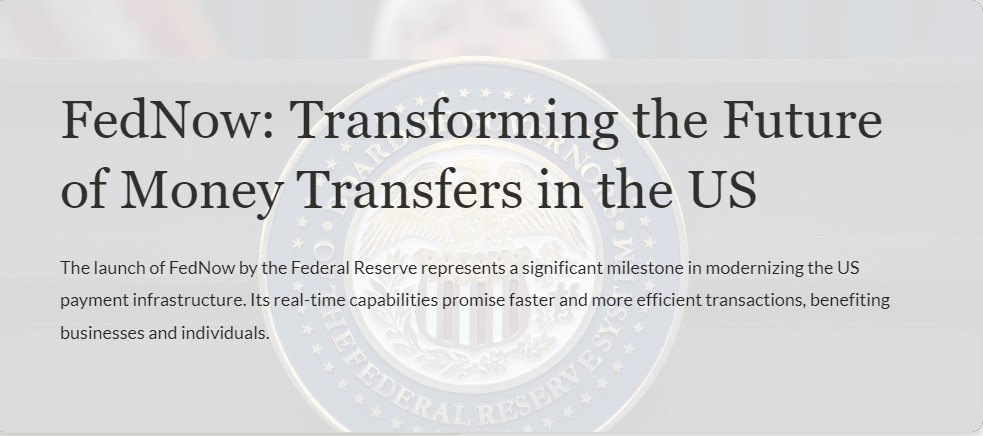FedNow: Transforming the Future of Money Transfers in the US
To modernize money transfers and foster a more efficient and secure payment ecosystem, the Federal Reserve has launched “FedNow,” an instant payment platform.
This groundbreaking initiative aims to facilitate faster cash flow for businesses and individuals, enabling seamless transactions in seconds. However, while FedNow promises numerous benefits, concerns have been raised about potential government surveillance and control, fraud, and the implications for central bank digital currency (CBDC) adoption.
In this article, we will delve into the key points surrounding FedNow, addressing its purpose, features, early adopters, the industry’s response, potential costs, and implications for the future of digital payments.
FedNow: A Modern Solution for Faster Payments
FedNow is a revolutionary payment platform that allows financial institutions to transfer money between each other instantaneously.
Unlike traditional payment systems that may take several days to process transactions, FedNow aims to streamline and expedite payment processing, making it significantly faster and more efficient.
This real-time payment infrastructure provides numerous advantages, such as faster access to funds, enabling last-minute bill payments, and quick disbursement of government payments.
Early Adopters and Industry Response
The Federal Reserve’s initiative has garnered substantial support from the financial industry, with 35 early adopters already onboard, including major banks like JPMorgan Chase and Wells Fargo.
Additionally, 16 other institutions provide services for banks and credit unions related to FedNow, demonstrating the widespread interest and anticipation for the platform’s capabilities.
The American Bankers Association (ABA) has welcomed the development of FedNow, viewing it as a pivotal player alongside the Clearing House, which launched its payment service in 2017.
The positive response from industry stakeholders underscores the potential impact of FedNow in revolutionizing the way transactions are conducted within the US economy.
Addressing Concerns: Government Surveillance and Control
Despite the excitement surrounding FedNow’s launch, some online sources have raised conspiracy theories, expressing concerns about potential government surveillance and control over transactions and bank accounts.
It is important to note that FedNow operates under the Federal Reserve’s governance, an independent entity that maintains a stable and secure financial system.
However, to put fears of unwarranted surveillance at rest, the Federal Reserve has consistently stressed its commitment to robust data protection and privacy standards. The system complies with stringent security protocols, ensuring user data remains confidential and protected from unauthorized access.
Fraud and Security Concerns
Another issue raised is the potential increase in fraud with real-time payments. Critics argue that faster transactions may reduce the time available for banks and payment processors to detect and prevent fraudulent activities.
While this concern is valid, the Federal Reserve and participating financial institutions know the importance of implementing robust security measures.
FedNow has been designed with built-in security features to protect against fraudulent transactions. Financial institutions are expected to utilize advanced fraud detection technologies and risk management strategies to safeguard users from unauthorized activities.
FedNow: A Step Towards CBDC Adoption?
Amid discussions about the rise of central bank digital currencies (CBDCs) worldwide, there are speculations about how FedNow could potentially mitigate the need for a CBDC in the US. It is essential to understand that FedNow is not a seismic shift towards a CBDC but an upgrade to the existing FedACH system.
While FedNow demonstrates the Federal Reserve’s commitment to modernizing the payment infrastructure, it does not necessarily imply an immediate transition to a CBDC.
The Federal Reserve has studied the digital dollar’s potential implications and use cases. Still, any decision will be made independently and deliberately, considering various economic and regulatory factors.
Cost Considerations and Integration
As FedNow begins to gain traction, one of the primary concerns for banks and consumers is whether financial institutions will charge fees for using the service.
The matter of fees is likely to vary from one bank to another, with some banks offering the service for free as a competitive advantage, while others may levy nominal charges.
As the system continues to develop, the Federal Reserve plans to integrate FedNow into the apps and websites of banks and credit unions.
This integration will further enhance accessibility and usability, providing users with seamless access to the platform for daily transactions.
Final Thoughts
In conclusion, the launch of FedNow by the Federal Reserve represents a significant milestone in modernizing the US payment infrastructure.
Its real-time capabilities promise faster and more efficient transactions, benefiting businesses, individuals, and government agencies.
While concerns about government surveillance, fraud, and CBDC adoption have been raised, the Federal Reserve is dedicated to addressing these issues through stringent security measures and transparent governance.
As FedNow gains widespread adoption and further develops its features, it has the potential to revolutionize the way Americans conduct financial transactions, laying the groundwork for a more digitized and interconnected economy.
Nonetheless, it remains essential for users and financial institutions to stay vigilant, embrace secure practices, and participate in responsibly shaping digital payments’ future.
